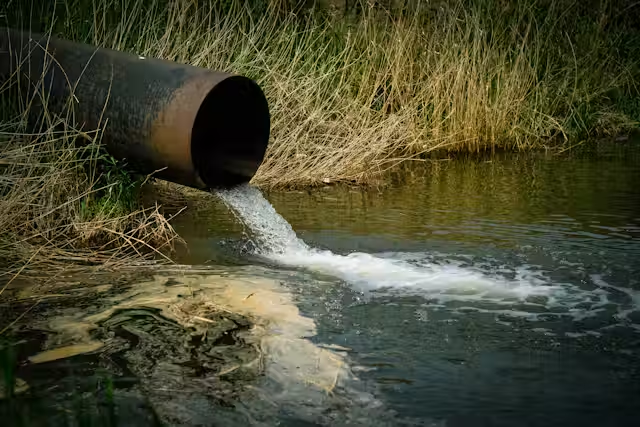
Guarding Liquid Lifelines: Identifying and Preventing Pollution Sources in Rivers
Rivers, the intricate networks that weave through landscapes, are essential to the well-being of our planet. However, the threat of pollution looms large, jeopardizing the health of these liquid lifelines. In this exploration, we delve into the critical importance of identifying pollution sources and discuss proactive measures to prevent the contamination of rivers, ensuring their vitality for generations to come.
Identifying Pollution Sources: Unraveling the Culprits
The first step in preserving river health is to identify and understand the sources of pollution. Pollution can take various forms, from chemical discharges to nutrient runoff and debris accumulation. Here are key ways to unravel the culprits behind river pollution:
1. Water Quality Monitoring: The Eyes Beneath the Surface
Water quality monitoring is a fundamental tool in identifying pollution sources. Regular assessments of physical, chemical, and biological parameters provide insights into the health of rivers. Elevated nutrient levels, abnormal pH values, and the presence of contaminants can signal pollution. Utilizing technologies such as multiparameter probes, sampling equipment, and laboratory analyses aids in gathering accurate and comprehensive data.
2. Source Tracing Techniques: Following the Trail
Source tracing involves identifying the origin of pollutants by tracking their movement through the river system. Using techniques such as dye tracing, isotopic analysis, and microbial source tracking, scientists can pinpoint the sources of contaminants. This information is crucial for implementing targeted strategies to address pollution at its root.
3. Remote Sensing Technologies: Aerial Perspectives
Advancements in remote sensing technologies offer a broader perspective on river ecosystems. Satellite imagery and aerial surveys can help identify pollution sources by detecting changes in land use, identifying discharges, and assessing the extent of pollution events. Remote sensing provides valuable insights, especially in large-scale river networks.
4. Citizen Science Initiatives: Community Vigilance
Engaging communities in monitoring efforts through citizen science initiatives is a powerful way to identify pollution sources. Local residents can actively participate in data collection, reporting visible pollution events, and raising awareness. Community vigilance creates a distributed network of observers, enhancing the spatial coverage of pollution monitoring.
Preventing Pollution: Proactive Measures for River Conservation
Once pollution sources are identified, proactive measures must be implemented to prevent further degradation of rivers. From regulatory frameworks to community-led initiatives, a multi-faceted approach is necessary to safeguard these vital ecosystems:
1. Implementing Stringent Regulations: Legal Safeguards
Regulatory frameworks play a pivotal role in preventing pollution. Governments and environmental agencies must establish and enforce stringent regulations on industrial discharges, agricultural practices, and urban development. Setting clear standards for water quality and imposing penalties for non-compliance create a legal safeguard against pollution.
2. Sustainable Agricultural Practices: Nurturing the Land Responsibly
Agricultural runoff is a significant contributor to river pollution. Implementing sustainable agricultural practices, such as precision farming, cover cropping, and reduced fertilizer use, minimizes nutrient runoff. Conservation tillage and riparian buffer zones also play crucial roles in preventing soil erosion and preserving water quality.
- 3. Green Infrastructure: Urban Solutions
In urban areas, green infrastructure offers a sustainable solution to prevent pollution. Incorporating features like permeable pavements, green roofs, and vegetated swales helps manage stormwater runoff, reducing the flow of pollutants into rivers. Cities can invest in nature-based solutions that mimic natural hydrological processes.
4. Industrial Best Practices: Cleaner Production Methods
Industries must adopt cleaner production methods to prevent the release of harmful pollutants into rivers. Implementing water recycling systems, treating industrial effluents before discharge, and adopting eco-friendly technologies contribute to minimizing the environmental impact of industrial activities.
5. Waste Management: Curbing Pollution at the Source
Proper waste management is essential for preventing pollution. Municipalities should establish efficient waste collection and disposal systems to prevent litter and debris from entering rivers. Public awareness campaigns can encourage responsible waste disposal practices, reducing the likelihood of pollutants reaching water bodies.
6. Riparian Restoration: Protecting Riverbanks
Riparian zones, the areas along riverbanks, play a crucial role in preventing pollution. Vegetative cover in riparian areas stabilizes soil, filters pollutants, and provides a buffer against runoff. Restoration projects focused on replanting native vegetation and maintaining riparian habitats contribute significantly to the overall health of rivers.
7. Public Awareness and Education: Empowering Communities
Empowering communities through public awareness and education initiatives is key to preventing pollution. Educating the public about the consequences of pollution, promoting sustainable practices, and fostering a sense of environmental stewardship create a collective commitment to preserving river health.
8. Collaborative Partnerships: Joining Forces for Conservation
Collaborative partnerships between government agencies, non-profit organizations, businesses, and communities are crucial for effective river conservation. Shared responsibility, knowledge exchange, and coordinated efforts amplify the impact of pollution prevention measures. Collaborations foster a holistic approach to addressing the complex challenges of river health.
Conclusion: A Collective Commitment to River Conservation
Identifying pollution sources and implementing preventive measures requires a collective commitment from individuals, communities, and policymakers. Rivers are not only a reflection of environmental health but also integral to the well-being of our planet. Through vigilant monitoring, proactive initiatives, and a shared dedication to sustainable practices, we can guard these liquid lifelines, ensuring that rivers thrive as vital ecosystems for generations to come. In the journey towards river conservation, every action counts, and every individual becomes a guardian of our precious liquid landscapes.
